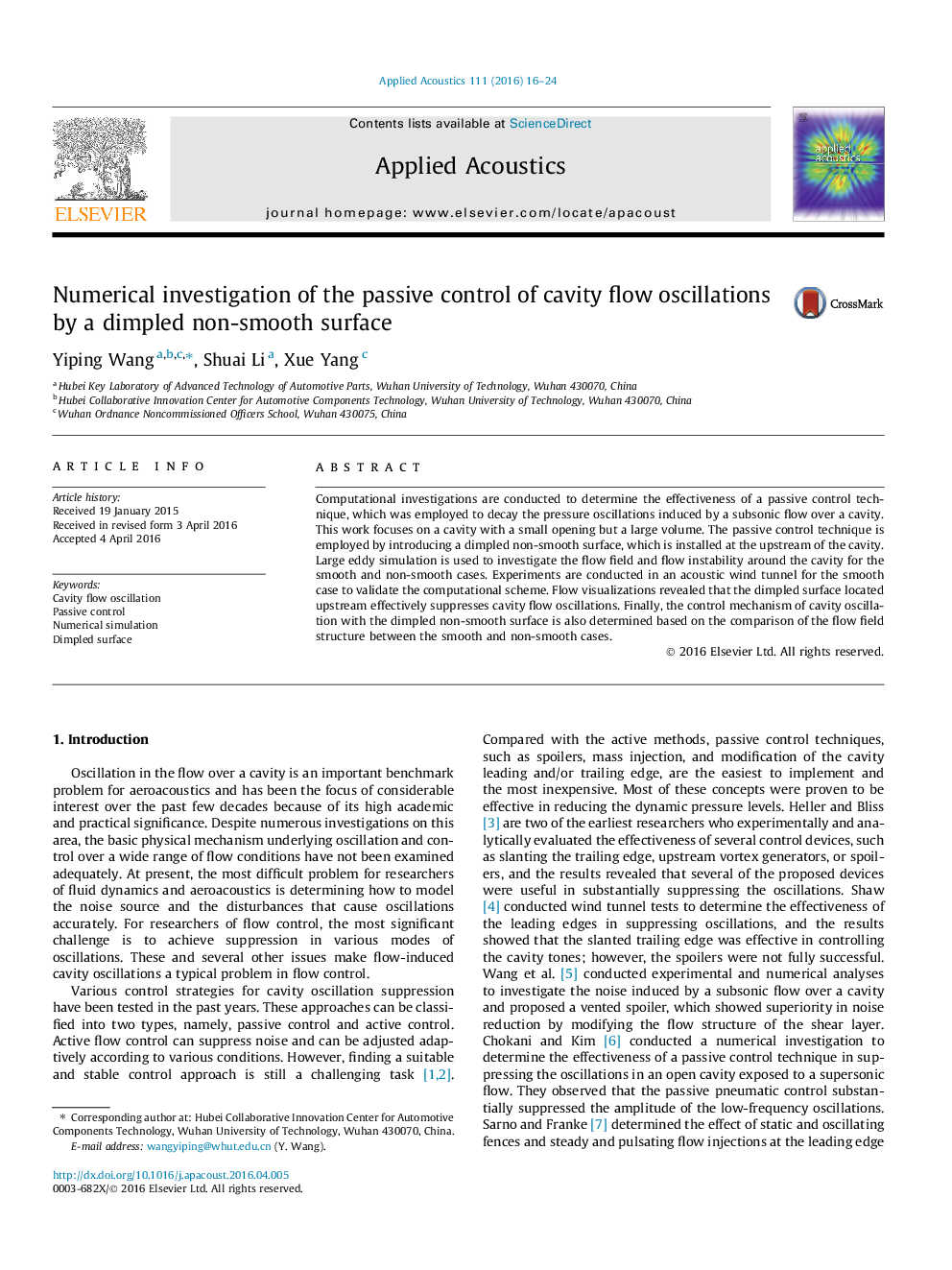| Article ID | Journal | Published Year | Pages | File Type |
|---|---|---|---|---|
| 7152444 | Applied Acoustics | 2016 | 9 Pages |
Abstract
Computational investigations are conducted to determine the effectiveness of a passive control technique, which was employed to decay the pressure oscillations induced by a subsonic flow over a cavity. This work focuses on a cavity with a small opening but a large volume. The passive control technique is employed by introducing a dimpled non-smooth surface, which is installed at the upstream of the cavity. Large eddy simulation is used to investigate the flow field and flow instability around the cavity for the smooth and non-smooth cases. Experiments are conducted in an acoustic wind tunnel for the smooth case to validate the computational scheme. Flow visualizations revealed that the dimpled surface located upstream effectively suppresses cavity flow oscillations. Finally, the control mechanism of cavity oscillation with the dimpled non-smooth surface is also determined based on the comparison of the flow field structure between the smooth and non-smooth cases.
Related Topics
Physical Sciences and Engineering
Engineering
Mechanical Engineering
Authors
Yiping Wang, Shuai Li, Xue Yang,
